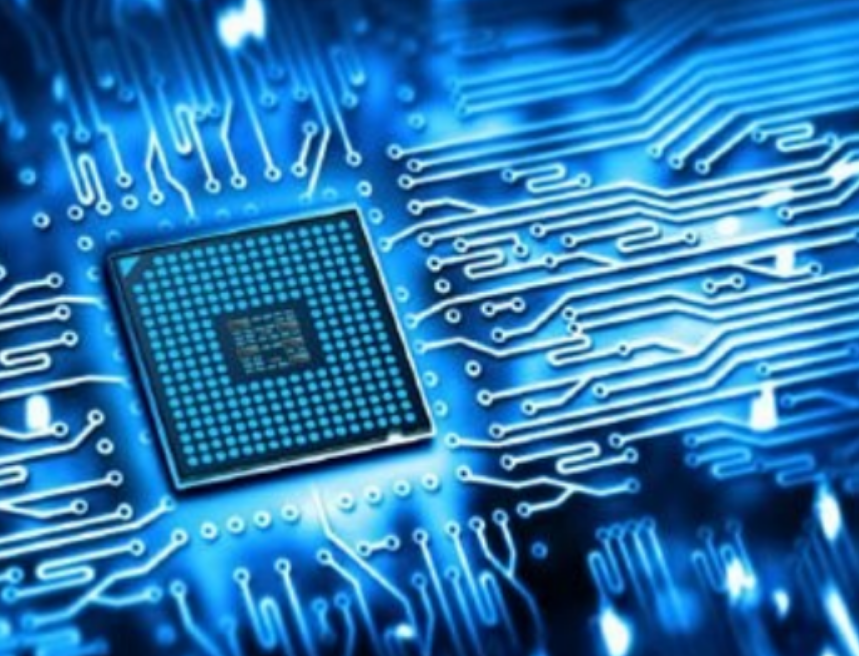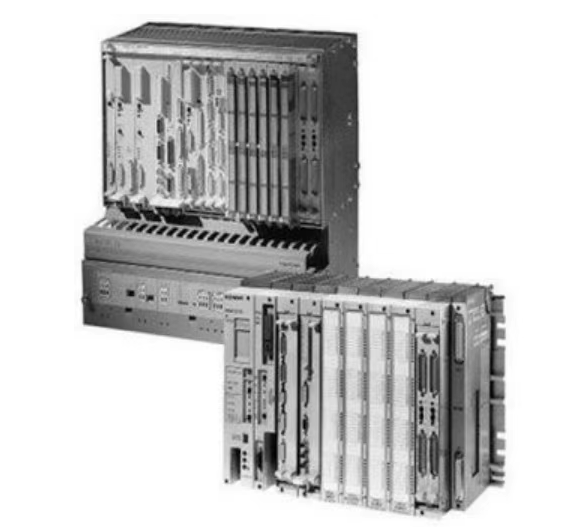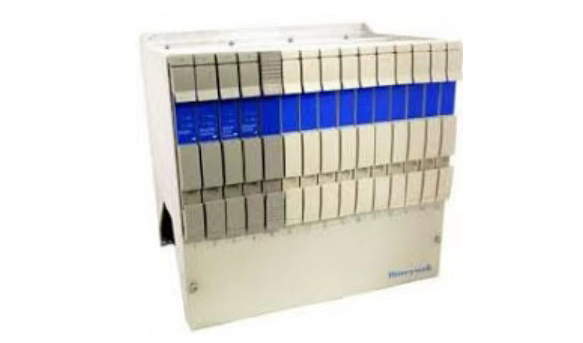-
 Email Us justwellautomation@qq.com
Email Us justwellautomation@qq.com
A must-read for automation professionals: The technological evolution behind Industry 4.0 - from transistors to edge intelligence
Industrial automation technology has achieved leapfrog development in the past few decades, profoundly reshaping the global industrial landscape. Its transformation is no less powerful than the revolutions in transportation, communications, and business technology, and it has always been learning from and innovating with these fields. Today, with the acceleration of the fourth industrial revolution (Industry 4.0), smart products, advanced methods, and innovative architectures are driving automation and control technologies to break through traditional boundaries and lead industrial production towards a more efficient and connected future.

From mainframe computers to embedded processors inside controllers and sensors, the computing power of everything is derived from transistors. The transistor was invented in 1947 by John Bardeen and Walter Brattain at Bell Labs. The innovation of the transistor was fundamental to the development of integrated circuits and microprocessors. Even today's most powerful processor chips measure their performance by the number of transistors they have. The first widely available low-cost junction transistor was the Ravtheon CK722, a PNP germanium small-signal unit introduced in early 1953 at a price of $7.60 per unit. To put the cost perspective into context, Texas Instruments in Dallas, Texas, in partnership with the Industrial Development Engineering Association (IDEA) in Indianapolis, Indiana, developed the world's first commercial transistor radio, the Regency TR-1. The Regency TR-1 went on sale in 1954 for $49.95 ($476 in 2019 dollars). Transistors enabled electronic industrial controllers in the 1950s, which over time replaced many pneumatic or air controller applications in the 1920s and 1930s.
The history of the cost evolution of solid-state electronics is a story of delivering more power at a lower cost. Moore’s Law is the story of this. Since it was first proposed by Gordon Moore, co-founder of Fairchild Semiconductor and CEO of Intel, Moore’s Law has stood the test of time. In a 1965 paper, he described the doubling of the number of components per integrated circuit every year and predicted that this growth rate would continue for at least a decade. Moore’s Law continues to drive computing technology, as evidenced by the sophistication and miniaturization of commercial and industrial equipment.
The Internet of Things (IoT) is made possible by the ever-smaller and cheaper electronic devices and processors.
Programmable Logic Controller (PLC)

In 1970, the first programmable controller was delivered to General Motors to control metal cutting, drilling, material handling, assembly and testing of the Hvdramatic 400 automatic transmission. Two elements of success were: the use of computers to solve logic problems previously done by relays; and ladder logic. Programming, which enabled electricians to program computers using their basic knowledge. Before PLCs, people used large relay banks. They took up a lot of space, relied on the reliability of mechanical relays, were difficult to troubleshoot and required a lot of time-consuming rewiring to change any reconfigured logic.
Bedford engineer Richard Morley is considered the original contributor to this design. He and his team of engineers created a solid-state sequential logic solver designed for factory automation and continuous processing applications: this was the first practical programmable logic controller. It was called the "Modicon 084" because it was the 84th project of Bedford Associates. After learning of GM's needs, the company demonstrated the Modicon 084 to the General Motors Hydraulics Division in November 1969.
Ladder logic programming was a huge advantage for electricians. Like the spreadsheets later used by professionals such as accountants, users were able to program the computer in an easy-to-understand way. Bedford's ladder logic incorporated symbols from electrical engineering to describe sequences of operations. Inventor Morley, in an article titled "Is Ladder Logic Dead?" published in the April 1992 issue of Manufacturing Systems magazine, recalled:
Ladder logic as a control language was first used in conjunction with silicon devices at Bedford Associates around 1969. To support the control language, a hardware platform was designed that consisted of three components: a dual-port memory, a logic solver, and a general-purpose computer. In the early days of Modicon, we used a simplified ladder representation. Its greatest advantage was that any electrician in the world could understand the language. Later, the language was expanded to a multi-node language, and more features were added… The functionality of ladder logic and the adaptability of PLCs quickly gave rise to an entire industry.
The advantage that PLCs brought to the control industry was the ability to program the system, which was not possible with electromagnetic relay panels. When the control scheme changed, the relay panel had to be rewired. In contrast, the new PLC was easier and faster to replace, and it took up less space.
Distributed Control System (DCS) Architectu

In 1975, the introduction of Honeywell's "TDC 2000" marked the beginning of commercial distributed control systems (DCS). It was the first system to use microprocessors as an integrated part of the system for direct digital control of processes. This distributed architecture was revolutionary, enabling digital communication between distributed controllers, workstations and other computing elements. Computer-based process control systems before TDC 2000 were mainly data acquisition and alarm systems, with control being performed by pneumatic loop controllers and independent electronic proportional integral differential (PID) controllers.
Around the mid-1970s, Japan's Yokogawa Electric Corporation introduced a distributed control system called "Centum". Both Yokogawa Centum and Honeywell TDC 2000 were based on the idea that multiple microprocessor-based loop controllers could be controlled by a supervisory microcomputer. The operator only needed a push-button cathode ray tube (CRT) display screen instead of an alarm panel. The controllers were connected together by a data highway that carried information from each node or site. This highway, or bus, would act as a signal routing. This design moves the controller back into the process control loop, shortening the control loop and saving wiring costs.
Personal Computer (PC)

In 1981, IBM introduced the personal computer, which ran an operating system that would become the standard Disk Operating System (DOS) developed by Microsoft. The PC was a general-purpose computer that cost much less than a minicomputer. The PC architecture took advantage of the innovation and creativity of many developers, with an open hardware bus for expansion cards and an open operating system that developers could use to run their own applications. The openness of the PC platform greatly expanded the available applications, stimulated people's creativity, and created a developer ecosystem that met a wide range of needs. The PC revolution began, and industrial automation has benefited greatly from it.
Human Machine Interface (HMI)
The development of HMI in process control began with CRT-based systems where operators could read the relative positions of process variables at a "glance," developing a pattern recognition approach to analyzing current plant operations. Honeywell's TDC 2000, introduced in 1975, revolutionized the evolution of operator consoles.
The advent of personal computers running DOS and using third-party graphics software around 1985 gave rise to new HMI solutions. New companies included Intellution, lconics, and USDATA.
HMI for Microsoft Windows, which added significant functionality and open interfaces to information technology (IT) and business systems.
Microsoft Windows

The introduction of Microsoft Windows in late 1985 had a profound impact on industrial automation. Starting with Wonderware InTouch software, almost all industrial automation vendors adopted Windows, despite their initial belief that Windows was not suitable for industrial and process automation.
Microsoft introduced Windows on November 20, 1985, as a graphical operating system shell for MS-DOS in response to the growing interest in graphical user interfaces (GUIs). Microsoft Windows is a full-featured, integrated operating system that has captured more than 90% of the global PC market, surpassing Mac OS, which was introduced in 1984. In the PC space, Windows remains the most popular operating system to this day.
The rich environment of Microsoft Windows has spawned a large ecosystem of developers who write software for a wide variety of applications, including databases, analytics, advanced controls, manufacturing execution systems (MES), batch management, production tracking, and historians.
Microsoft Windows became the bridge that connects real-time plant operations with IT and business systems, enabling more unified and coordinated manufacturing and production. The Microsoft Windows operating system platform allows users to analyze manufacturing data using standard IT tools and seamlessly share production and factory information with business systems. Windows provides an OPC development platform that significantly simplifies software drivers for industrial network and device interfaces.
Historical database

A wide range of scientific and engineering applications established the value of time series historical data, which was widely used in the control and automation fields as personal computers became popular. OSlsoft, formerly Oil Systems Inc., launched the Pl System, or Plant Information System, which promoted the widespread use of historical databases. Patrick Kennedy founded the company in 1980 and is known as the father of the plant historian, which has become an important tool for improving productivity, efficiency and profits in many industrial manufacturing and process control applications. Automation engineers, operators and business people use historian information for a variety of different applications. Historical databases have withstood the test of time and proved their continued value, and are now embedded in controllers and cloud servers.
Open Industrial Network

Open industrial networks covering sensors, control, and communications have significantly simplified the application of control and automation. This marked the beginning of the ability to use sensors and devices from multiple vendors in a single system with a common communication interface. As general electronics and communication technologies have advanced, it has become possible to build open industrial communication networks using commercial technologies.
Since 1979, Modbus has enabled communication between numerous devices from multiple vendors using the RS-485 standard. The standard defines the electrical characteristics of drivers and receivers for multi-point serial communication systems to connect a variety of controllers, sensors, instrumentation, PID controllers, motor drives, and other devices. Modbus is still widely used in product, manufacturing, and process plant applications. Fieldbus communication standards flourished in the late 1980s and 1990s. Among them, some well-known standards include DeviceNet°, Profibus, SERCOS, ASi (Actuator Sensor Interface), Foundation Fieldbus and HART (Highway Addressable Remote Transducer). The HART communication protocol is the only one that is not purely digital. It is an analog + digital hybrid industrial automation open protocol. Its most significant advantage is that it can communicate through the traditional 4-20 mA analog instrument current loop and share a pair of wires used by the pure analog host system.
ISA-88 Batch Control Standard

The ISA-88 (ANSI/ISA-88) series of standards is used to design and specify batch control systems that are widely used in the process control industry, have had a significant impact on productivity, and continue to be widely adopted around the world. ISA-88 is dedicated to batch process control and aims to achieve a design philosophy that describes equipment and procedures suitable for software implementation and manual processes. The first standard in the series was approved by the |SA in 1995 and adopted by the |EC as IEC 61512-1 in 1997.
ISA-88 provides a consistent set of standards and terminology for batch control and defines physical models, processes, and recipes. The standard addresses a wide range of needs, including the creation of a common batch control model, a common approach to solving user requirement expression challenges, integration between batch automation vendors, and simplified batch control configuration. ISA-88 has played an important role in connecting all aspects of batch production from the factory floor to enterprise systems. Notably, the PackML standard adopts ISA-88.
Industry 4.0
Industry 4.0 focuses on applying a range of new technologies to create efficient, self-managed production processes using the Internet of Things, open software and communication standards, enabling sensors, controllers, people, machines, equipment, logistics systems and products to communicate and collaborate directly with each other. Germany's "Industry 4.0" initiative has influenced thinking around the world and has become a model for other initiatives and collaborations, including "Made in China 2025", Japan's industrial value chain initiative, "Make in India" and the Smart Manufacturing Leadership Consortium (SMLC).
A core principle of Industry 4.0 is that automation systems must adopt open source, multi-vendor, interoperable software applications and communication standards, similar to existing computer, Internet and mobile phone standards. The Industry 4.0 demonstration verifies this by using existing standards, including ISA88 batch standard, ISA-95 enterprise control system integration standard, OPC UA, IEC6-1131-3 and PLCopen.
The Industry 4.0 initiative began as part of Germany's ten-point high-tech strategic plan developed in 2006. On July 14, 2010, the German Cabinet decided to continue the strategy and launched the "2020 High-Tech Strategy" initiative, focusing national research and innovation policies on specific forward-looking projects related to scientific and technological development in the next 10 to 15 years. Industry 4.0 is an industrial integration vision that uses computing, software and Internet technologies. 4.0 refers to the fourth industrial revolution:
First: Use water and steam power to achieve the point of mechanization of production
▲Second: Mass production (Henry Ford is often considered an innovator)
Third: Digital revolution (such as machine tool CNC, programmable logic controller, direct digital control, enterprise resource planning)▲Fourth: Industry 4.0 uses information-physical systems, embedded computing, and Internet of Things technologies
The German strategy emphasizes industry-university-research cooperation to promote closer links between knowledge and skills. The vision of Industry 4.0 is to significantly improve productivity, efficiency, and achieve self-managed production processes, enabling people, machines, equipment, logistics systems, and work-in-progress components to communicate and collaborate directly with each other. Its main goal is to use low-cost large-scale production efficiency to achieve order-based production through embedded processing and communication technologies. Production and logistics processes will be intelligently integrated across company boundaries, thus creating a more efficient and flexible real-time lean manufacturing ecosystem.
Digital Twin
Digital twin has become one of the most powerful concepts of Industry 4.0. The digital twin concept helps companies achieve real-time integrated manufacturing through real-time model-based closed-loop monitoring, control and optimization of the entire manufacturing and production process.
The basic idea of digital twin is to build a virtual model of ideal manufacturing operations and processes. The model will benchmark the actual production indicators in real time. The most widely implemented model covers all factors that affect production efficiency and profitability, including machines, processes, labor, incoming material quality, order flow and economic factors. Companies can use this rich information to identify and predict problems before they disrupt efficient production.
Digital twin is a prominent example of practical macro closed-loop control, which can be achieved by leveraging existing advanced hardware, software, sensor and system technologies. The key to creating a digital twin is the need to have a complete set of information, including the use of various sensors to capture real-time information based on these requirements. Industry 4.0 is the practical application of the latest technologies such as the Internet of Things to integrate manufacturing and business systems.
Cloud Computing is impacting a wide range of applications, including industrial automation, by providing easy-to-use, high-performance computing and storage without the need for large capital investments or ongoing indirect support costs for in-house computers and servers. Cloud providers, including Microsoft Azure and Amazon Web Services, have a variety of software tools (such as data analytics and prediction tools) that can be used by the general industrial sector and process automation plants to solve manufacturing, production, and business challenges. Many industrial automation applications, such as historical databases, condition-based maintenance, predictive maintenance, asset management, and failure analysis, are now becoming more cost-effective through cloud computing technology. Cloud computing provides virtually unlimited computing power and on-demand massive storage using shared resources and economies of scale similar to those of electric utilities. Edge computing, a deployment method for low-cost high-performance computing (including communications), is becoming more common. It stores computing and data closer to where it is needed to reduce response times, add context to data, and perform required functions locally. Throughout the history of computing and industrial automation, processing has always been pushed to the edge of the network as far as was technically feasible at the time. Today, edge devices can be small blind node computers or system-on-chip (SoC) embedded in sensors, actuators, and other devices, and are extremely cost-effective. To put this in context, imagine the performance and cost of your current smartphone. These computing devices are platforms for a variety of software, including IoT, IEC 61131-3 PLCs, OPC UA and MQTT, cloud interfaces, time series databases, human machine interfaces (HMIs), and analytics. These devices can implement ISA-95 Level 0-2 capabilities and some Level 3 capabilities that are consistent with the new IoT distributed computing model.
As industrial sensor networks and edge devices become more prevalent, more applications will be deployed on these open system devices instead of PLCs and DCS controllers. Edge computing devices deploy both industrial and enterprise networking and communication capabilities, helping to seamlessly integrate IT and OT.